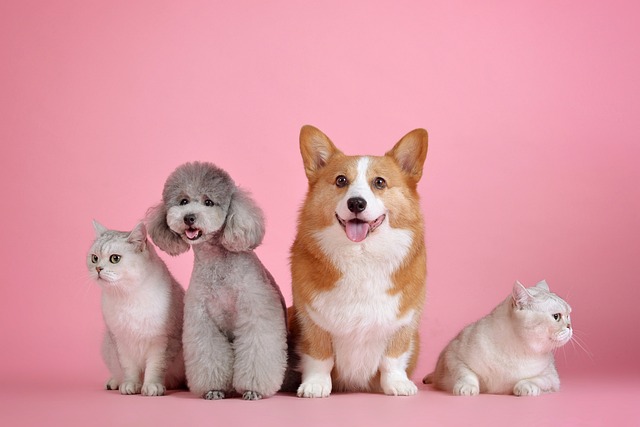
What is glaucoma in a dog?
You might notice your dog squinting more at mealtime or avoiding bright sunlight—these small changes could be early signs of a serious eye condition.
Dogs are humanity's most loyal companions, and their health tugs at the heartstrings of every pet owner. However, when a dog's mouth emits an unpleasant odor and there is a layer of yellowish dental calculus on its teeth, many owners become deeply worried. Dental calculus not only affects a dog's oral aesthetics but can also trigger a series of health problems. So, how can we remove dental calculus from dogs? And what causes it to form?
How to Remove Dental Calculus from Dogs?
1、If the dog's dental calculus is not severe, methods such as brushing teeth and using dental cleaning powder can be employed to help remove the dental calculus. The process of removing dental calculus through brushing and using dental cleaning powder is relatively slow and requires time. Additionally, dental cleaning powder is not suitable for treating severe cases of dental calculus.
2、If the dog has severe dental calculus, it is advisable to choose ultrasonic teeth cleaning. The probe of a pet - specific ultrasonic teeth - cleaning machine can oscillate the dental calculus, effectively removing it from the dog's teeth. When cleaning the dog's dental calculus, attention should be paid to the conditions of gingivitis and periodontal disease. Dogs with severe dental calculus usually need to be examined for possible bacterial endocarditis to reduce the risk of anesthesia.

Why Do Dogs Develop Dental Calculus?
1、Never Brushing a Dog's Teeth
Just as humans need to brush their teeth daily, dogs also require regular teeth - brushing to clean their mouths. However, most pet owners find it difficult to brush their dog's teeth or simply don't have the time, resulting in dogs going without teeth - brushing for long periods. It's not an exaggeration to say that some dogs may never have their mouths cleaned even once in their lives.
2、Long - term Feeding of Human Food
Many dogs are constantly fed human leftovers. Since human food is relatively soft, it fails to have a friction effect on the dog's tooth surface during eating. Instead, it adheres directly to the dog's teeth, and over time, dental plaque and dental calculus form. This is why dog food is recommended for dogs. The hardness of dog food is beneficial to a dog's teeth. It can not only help with teething but also assist in cleaning the teeth.
3、Long - term Consumption of Liquid Food by Dogs
Many pet owners are willing to spend money on their dogs and often feed them canned food. While this may seem like a good thing, it actually poses a hidden risk of dental calculus for dogs. The liquid - like meat in canned food is very soft and fine, so the meat residues are more likely to accumulate in the dog's tooth gaps. Without regular cleaning, dental calculus forms over time.
How to Prevent Dental Calculus in Dogs?
1、Regularly Brush a Dog's Teeth
Pet owners can start cultivating the habit of teeth - brushing for their dogs when they are around six months old. A frequency of about 2 - 3 times a week is sufficient.
2、Scientific Feeding
Pet owners should feed their dogs scientifically, paying attention to the intake of carbohydrates and fats. It is best to choose a dog food with a hard texture for the dog. During the process of chewing the dog food, the dog can not only clean its teeth but also prevent dental calculus in the long term.
3、Add Dental - cleaning Water to a Dog's Drinking Water
Every time a dog is about to drink water after a meal, pet owners can add a small amount of dental - cleaning water to the dog's drinking water. This not only freshens the dog's breath but also helps prevent dental calculus.
Taking care of a dog's oral health, preventing and removing dental calculus, is an unshirkable responsibility for pet owners. By understanding the methods of removing dental calculus, knowing the causes of its formation, and mastering scientific preventive measures, we can create a fresh and healthy oral environment for dogs. Regular teeth - brushing, scientific feeding, and appropriate use of dental - cleaning water - these seemingly simple behaviors are actually expressions of deep love and care for dogs.

You might notice your dog squinting more at mealtime or avoiding bright sunlight—these small changes could be early signs of a serious eye condition.

Let’s set the scene: It’s a sweltering Phoenix afternoon—105°F outside—and you rushed your 2-year-old Lab mix, Cooper, on a quick walk to “get it over with.”

Let’s get real: You’re in your Miami apartment, watching your 3-year-old Corgi, Loki, struggle to climb the stairs to your second-floor unit.

Many dog owners brush off occasional scratching as just “dog behavior,” but persistent itching often signals something more—like a food allergy.

You might first notice your dog scratching more than usual—chewing at their paws until the fur looks thin, or rubbing their face against the couch nonstop.

Let’s be real: You’re standing in your Chicago apartment, watching your 3-year-old Beagle, Max, huff and puff just to climb onto the couch.